I finally managed to explore a new area near Bonn, namely the Wahner Heide (heath) bordering the Cologne-Bonn airport. It’s a quite unique spot in the area due to its sandy soils and typical heathland vegetation (I hear you say “duh, it’s heath…”). I use the phrase “quite unique” just because I’m not sure whether there’s any other heathland in the area, maybe it does not warrant the relativizing “quite” – in which case I apologize in advance to any potential proud Wahner Heide locals. The area is a military training ground and as a result, some areas are inaccessible. However, some paths give you access to a good area of birding habitat (and I only explored a the southern part of the entire heath). I was very glad to see some different species to the ones I have seen in the recent months, quite refreshing after having spent a significant amount of my birding time in the local park (see my last post, amongst others…).”I finally managed to explore a new area near Bonn, namely the Wahner Heide (heath) bordering the Cologne-Bonn airport. It’s a quite unique spot in the area due to its sandy soils and typical heathland vegetation (I hear you say “duh, it’s heath…). I use the phrase “quite unique” just because I’m not sure whether there’s any other heathland in the area, maybe it does not warrant the relativizing “quite” – in which case I apologize in advance to any potential proud Wahner Heide locals. The area is a military training ground and as a result, some areas are inaccessible. However, some paths give you access to a good area of birding habitat (and I only explored a the southern part of the entire heath). I was very glad to see some different species to the ones I have seen in the recent months, quite refreshing after having spent a significant amount of my birding time in the local park (see my last post, amongst others…).
The main bird I wanted to see was Wood Lark, because believe it or not, I had never seen this species before. I have never visited suitable habitat of this species, which appears to explain this gap in my list as Wood Larks seem to have a relatively narrow habitat range. I would try to tell myself if the same thing if it were a generalist occupying a broad range of habitats that I’ve also been to, but I’m just trying to comfort myself here. If you are an alert reader, you would also have noticed that I used the word “had” instead of “have”, in the first sentence of this paragraph. A few minutes after getting into suitable habitat I heard the lovely song of a Wood Lark, and lo and behold, it was sitting right in the open on a dead branch. Another individual nearby was also calling, and we could see them giving their song flight before diving into the heath.
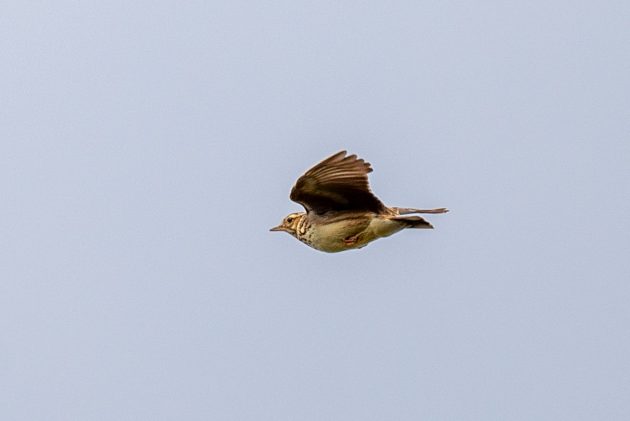
The heath was alive with several other birds that kept us busy. Common Stonechat and Tree Pipit were particularly obvious, and I loved watching the latter’s display flight. Similar to the Wood Lark, I have never been in the right habitat at the right time of year, so this was the first time that heard this species’ beautiful song. The song always reminds me of Common Chaffinch and Willow Warbler which were both very common as well, so there were a lot of ‘chaffinchesque’ songs around.
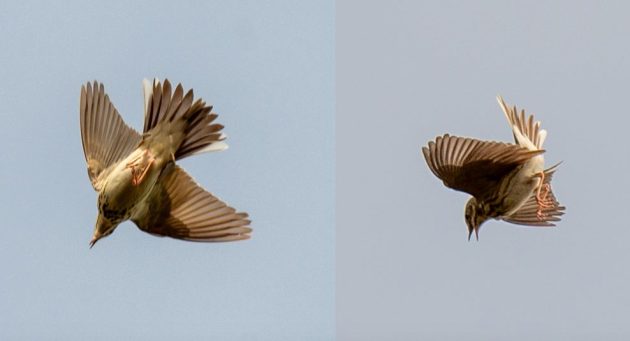
I was hoping that some other migrants had arrived, but it still seemed to be a trifle early for all species to arrive in their normal numbers. However, I saw my first Common Whitethroat of the season – a bad view of a cute bird but I was very happy to see that this species has also returned.
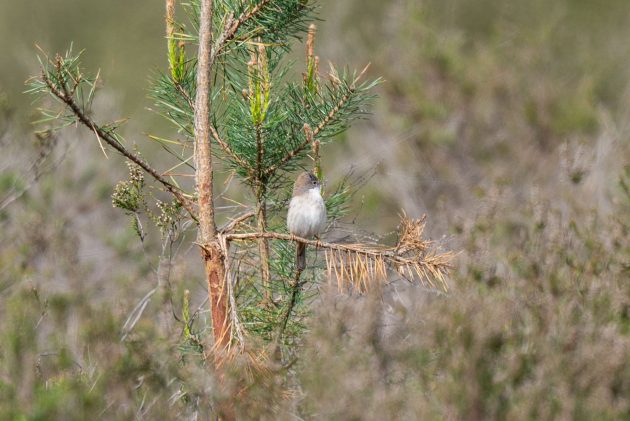
The ground was extremely sandy as is typical of heath, and another species that was true to its name was the sand lizard, with large numbers warming themselves in the sun amongst the shrubs. The stunning emerald-green individuals were very impressive. Despite their bright coloration, they went from obvious to invisible amongst the vegetation, as they somehow were able to blend in perfectly.
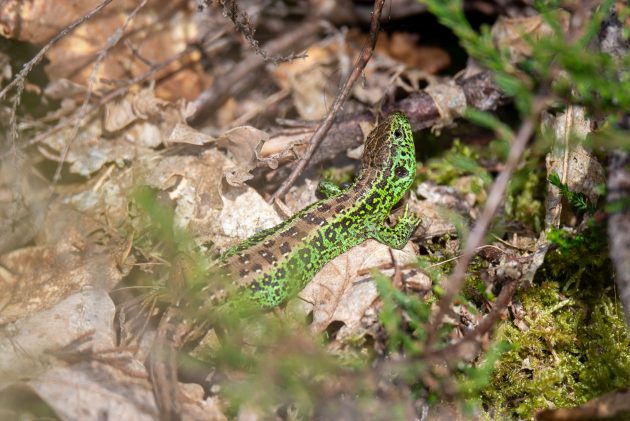
There are quite extensive forested areas as well, which host a different suite of birds. We heard Black Woodpecker and Grey-headed Woodpecker, and saw Common Raven and the whole host of small passerines one would expect, including a nice Hawfinch. I also got some more practice of Common Chiffchaff and Willow Warbler ID. By the end of my stay on Heligoland last year, when we had both species pass through in large numbers, I could tell them apart without any difficulties, but I noticed that some the trickier first individuals this spring required me to take a closer look. Not that I mind though, I think both of them are really cute birds. And after having seen quite a few I feel that I have got the feel back, as I find it’s as much giss (or jizz, whatever you want to call it) as coloration with these birds.
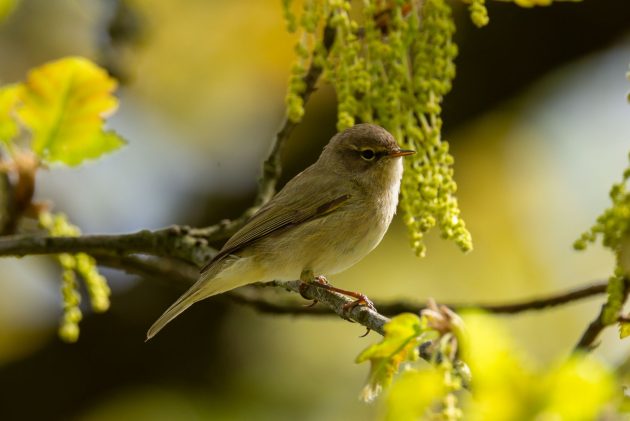
I visited the heath by bike to be more flexible, and this was good to cover some larger distances. However, I usually try to avoid birding by bike because I find that I hear way less, and if I push the bike I usually get into these hectic moments when a bird flies by or I want to get a record photo of some species. Today was not a big problem as I just had my binoculars and camera, but if I add my scope to that, I would be unable to push my bike, hold my scope over my shoulder and bring my bins to my eyes all within a second without dropping everything and causing everything with wings within a radius of 50 meters to fly away. I’m still trying to optimize this set-up, although I feel there is not that much optimizing if I decide to take all these optics. Still, I would never decide not to take them when visiting an interesting spot, and I do think that it’s part of birding outings to try and juggle all your equipment while not getting caught in all the straps around your shoulders!
Source link


